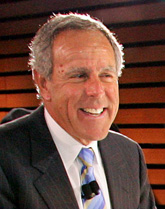
Decisions by Chrysler LLC and General Motors Corp. to shutter nearly 2,000 dealerships in the coming weeks likely will mean fewer sales and less revenue for the auto makers during an historically weak U.S. market.
“There is a risk of losing some sales, because every store front facing a crowd is a potential sale,” says Lincoln Merrihew, senior vice president, automotive, TNS North America, a market-research and consultancy firm in Newton, MA.
The National Automobile Dealers Assn., which lobbied Congress yesterday and the auto task force today with some 100 new-car dealers, says the industry needs as many dealers as it can get.
New-car sales through April were down 35.7% on a daily rate basis, according to Ward’s data.
NADA Chairman John McEleney calls the rapid cut in dealer ranks “a bad idea,” and says dealers are an auto maker’s main source of revenue. In the first quarter, bankruptcy talk helped slash GM’s North American revenue in half.
“Cutting dealers at this time would do absolutely nothing to make either GM or Chrysler more viable,” McEleney says in a statement ahead of Chrysler’s announcement today.
So far, the two auto makers have drawn nearly $20 billion in taxpayer loans. Chrysler entered bankruptcy last week, and all signs point to GM filing sometime on or before its June 1 government-imposed restructuring deadline.

However, Merrihew tells Ward’s the positives behind culling dealer numbers outweigh the negatives and ultimately will make the auto makers more competitive. Average sales per dealer will rise, and Chrysler and GM will spend less on supporting the surviving dealers with marketing dollars, training and parts distribution, he says.
Additionally, residual values will rise by eliminating pricing competition between dealers located too closely, and GM and Chrysler pumping incentives to draw down inventories.
“It cuts expenses dramatically,” Merrihew says of the dealer reductions.
Chrysler says the 789 dealers it plans to eliminate by June 9 account for 14% of the auto maker’s sales and 25% of its network. Half of the terminated locations sell less than 100 vehicles annually, while 658 stores sell more used cars than new.
Chrysler Vice Chairman Jim Press suggests sales should hold up, as the auto maker has maintained its 10% U.S. market share through the first two weeks of bankruptcy.
“Sales are running ahead of plan,” he says during a conference call today with journalists. “There is quite a bit of demand.”
Managing inventories at the terminated dealerships should not prove overly problematic, Press says. The sites presently carry a combined 34,000 cars and trucks, or roughly 43 units per dealer, with ’08 models comprising about 12% of that volume. Surviving dealers will purchase the inventory, likely at an attractive discount.
But the numbers do little to sooth terminated dealers, says Jim Eagan, a partner in the automotive dealership service group of consultant Plante & Moran in Southfield, MI.
“Among the dealers I’ve talked to today, there is a feeling of survivor guilt for those who made it and great concern among the owners of the terminated dealers for their employees,” Eagan says. “Most of these businesses are operated like extended families.”
Eagan says rationalizing dealer networks, alone, will not guarantee the viability of either auto maker. “The future of these companies will depend on all of the decisions management has to make.”
The fallout of today’s announcement fuels an argument that allowing natural market forces to play out may have been the smarter route. Chrysler’s planned dealer cuts jeopardize 200,000 jobs and millions of dollars in state and local taxes from vehicle sales, NADA says.
“This (will) have adverse effects on the auto industry and hurt an already struggling U.S. economy,” says McEleney, who supports dealer consolidation at a slower pace.
Ford Motor Co., which so far has resisted drawing on taxpayer loans, appears content to let the market determine who survives and who dies. Ford CEO Alan Mulally tells shareholders today at the auto maker’s annual meeting in Wilmington, DE, the auto maker has no intention of making drastic cuts to its dealer body.
“We have an incredible dealer network,” he says. “The only issue we have is that there are a few extra dealers in large metropolitan areas. That’s where we are consolidating.”
Adds Eagan: “There are legitimate arguments for the merits of both positions. Over my 30 years, I’ve seen management vacillate over those” two approaches.
GM is sending out notification letters to between 1,000 and 1,200 dealers today, informing them their franchise agreements will expire in 2010.
GM President and CEO Fritz Henderson tells Bloomberg the auto maker’s game plan focuses on handling customers the right way, exercising transparency with its dealers and reducing inventories whether or not it files for Chapter 11 next month.
“The plan is endurable, if you will, whether we go through a bankruptcy process or not,” he says. “We’ll deal with each dealer one at a time.”
GM says in its latest viability plan it wants to cut its dealership count from 6,246 in 2008 to 3,605 by the end of 2010, a 42% reduction coming four years earlier than specified in its original reorganization plan rejected by President Obama’s auto industry task force and the U.S. Treasury Dept.
Merrihew says the accelerated pace begs the question as to why the industry has insisted on moving so slowly with its restructuring over the last several years.
“The speed at which they are moving (now) is astonishing,” he says. “You have to ask, ‘What if?’”
–with Cliff Banks and David Zoia

